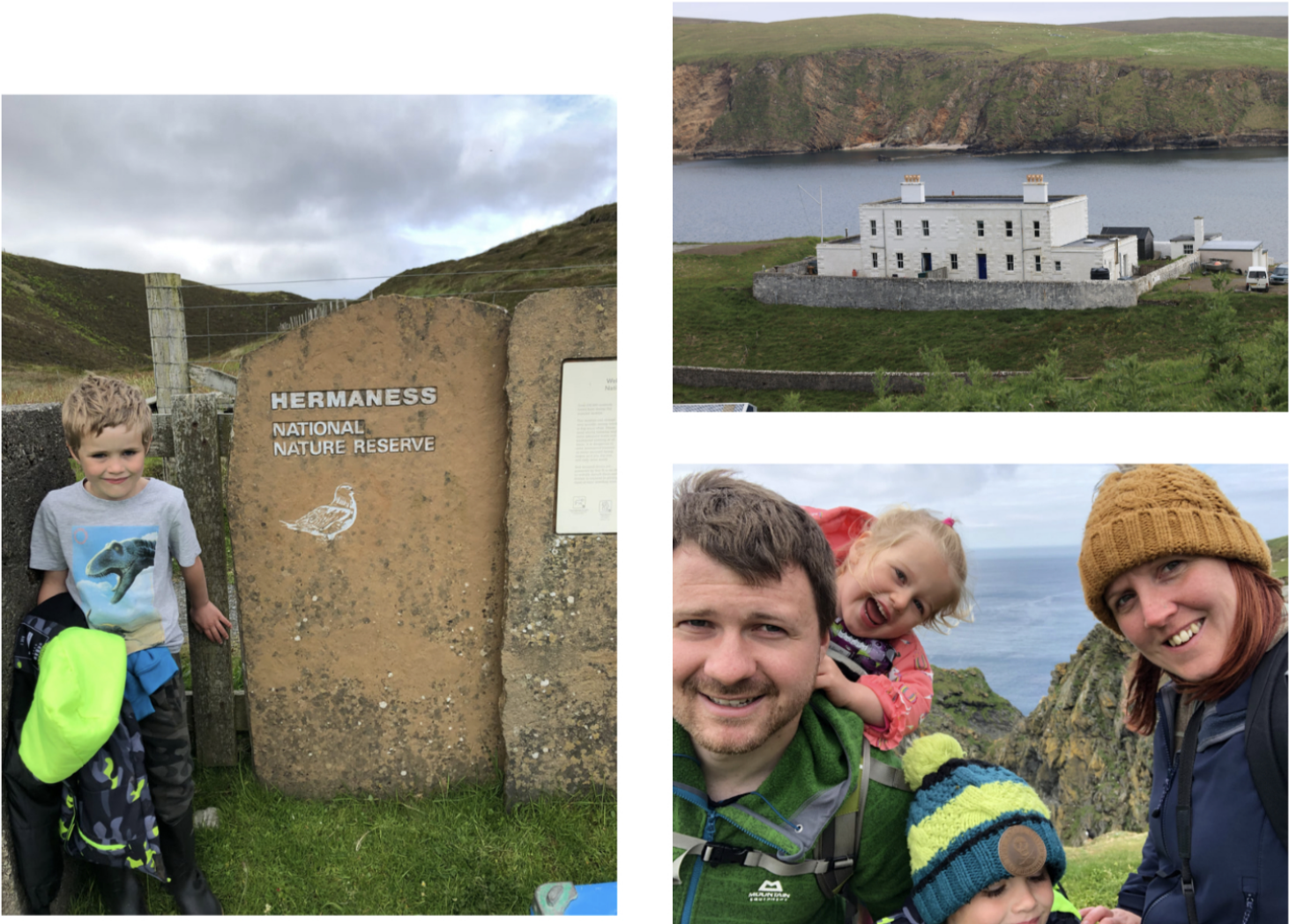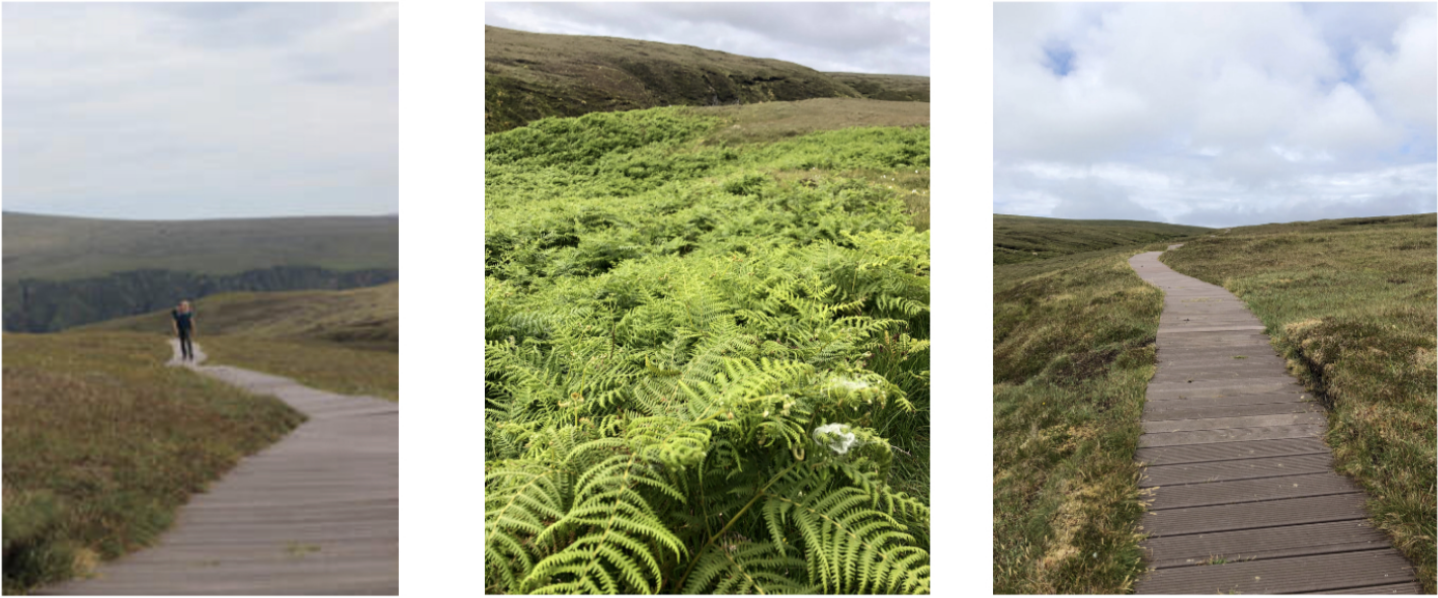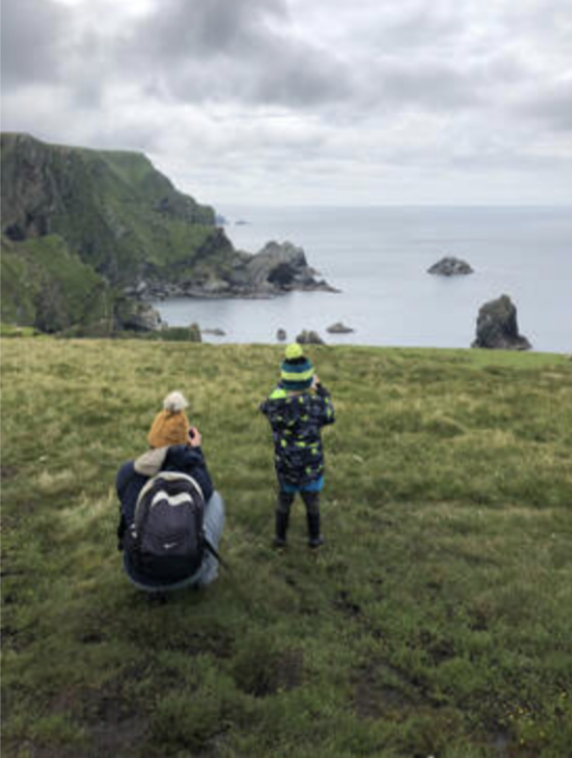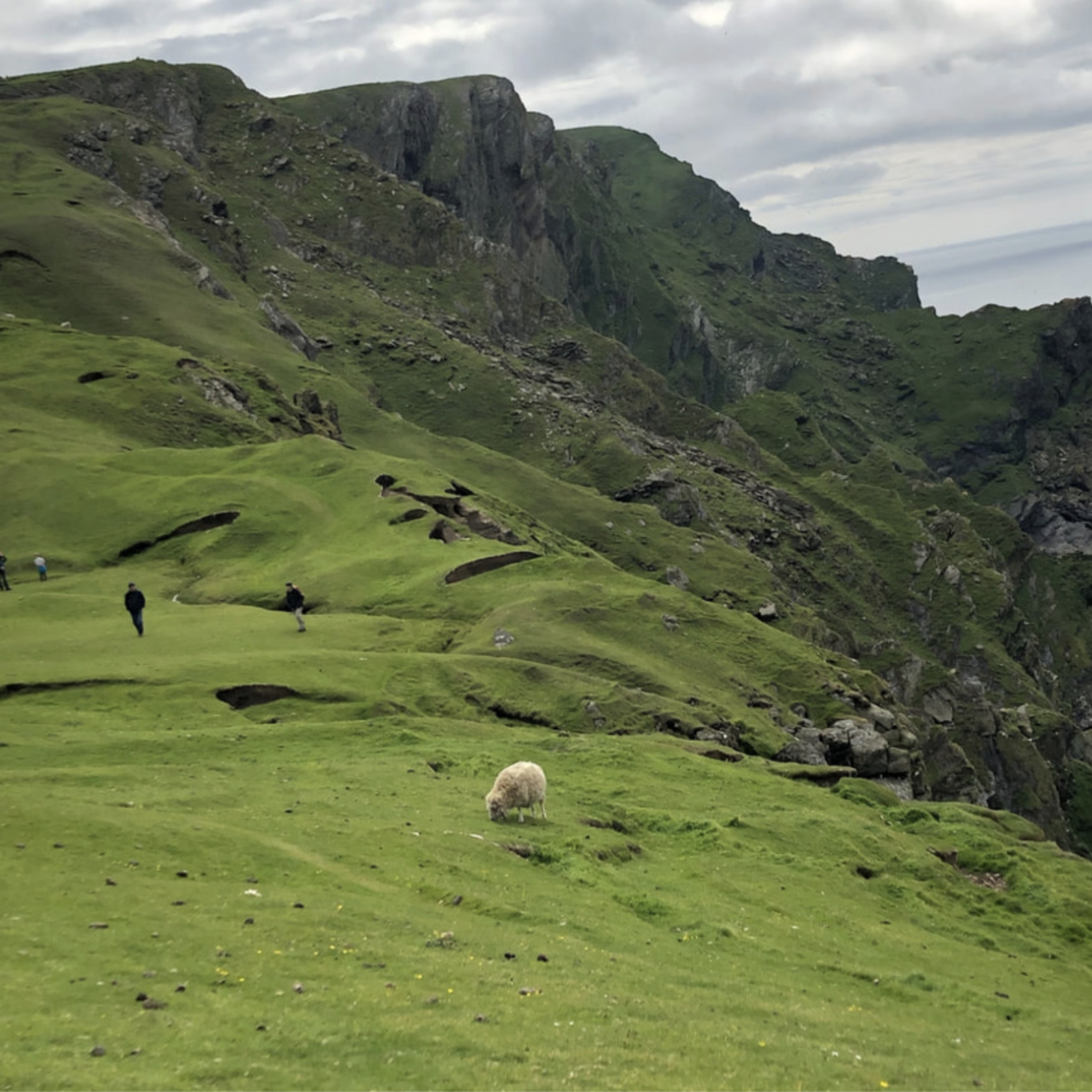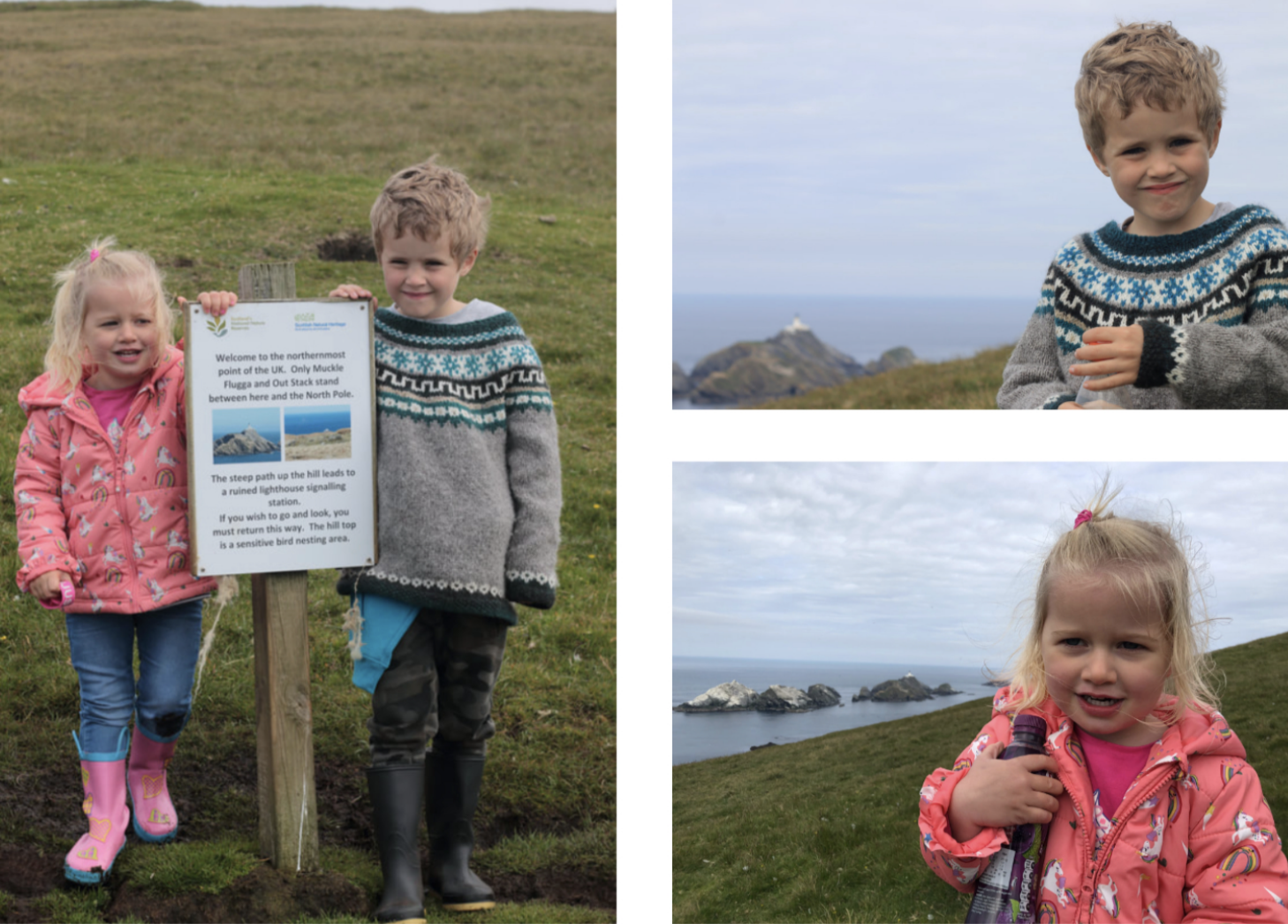A walk to Hermaness, Unst
Have you ever wondered what it would feel like to stand on the edge of the world? When I was little, I had big dreams. Dreams of sailing away to far-flung places in the world, but as I grew older, my career advisor told me that that wasn’t possible. “You can’t sail around the world,” she said. Despite this dream-shattering moment, I often find myself thinking about the vastness of the world, and our place in it, as I gaze out over the rolling North Atlantic. We are but one small cluster of islands – a rock – rising proudly from the sea. Standing on the point of Hermaness looking across to Muckle Flugga gives an incredible sense of place. With the Arctic to the north and Newfoundland to the west – it feels so much more.
Muckle Flugga lighthouse. The most northerly point in the UK
Hermaness is the most northerly point of mainland Unst – and the UK for that matter – with breathtaking views across to Muckle Flugga, a small sea-worn skerry with the UK’s most northerly lighthouse. The walk takes in much of the bird life on offer in Unst, including great skuas, a gannet colony and puffins.
Walk:
Distance:
5.5 miles (9km)
Time:
3 hours (we took 5 hours, soaking it all in and picnicking with our three and seven-year-old in tow)
Difficulty:
Moderately challenging
Hermaness, Unst
Dramatic and sheer, other-worldly and awe-inspiring; just a few words that sprang to mind reflecting on this walk. In a landscape ruled by the birds; puffins, gannets and fulmars proudly dominate the crags, stacks and cliffs, while nesting great skuas command the moorland (with an estimated 1,000 breeding pairs). Their dark silhouettes camouflaged by the heathery hills until the discerning eye homes in on them. Once the eye is trained, they appear everywhere the gaze falls; piercing eyes a reminder to respect their territory.
So that’s how the walk begins – in bonxie (skua) territory. Park at the designated Hermaness National Nature reserve car park where an information board outlines the route and leaflets are provided. Follow the path. The initial stages of the trail are gravel before it gives way to a boardwalk. The boardwalk has been much improved since I last did the walk with a friend a few years ago. I don’t know if it was the old wire-covered walkway or the hangover, but the path ran before my eyes, leaving me feeling sick, dizzy and uninspired.
The walk to Hermaness follows a boardwalk for most of the way. Look out for native flowers and ferns along the way
The boardwalk that carefully weaves through the boggy moor, safely navigates you away from the bonxies. Spongy and soft underfoot, it’s a nice easy walk with the laverock’s (skylark) song providing an uninterrupted playlist. This area of blanket bog is vitally essential to the birds that nest in it, providing the lungs for Shetland’s environment. Without trees, this blanket bog is a crucially important carbon store.
As the boardwalk ends, the moor gives way, and the first thing to hit me was the smell; that oh so familiar smell of the sea. As brown heather gave way to green grazing, the light opened up, and I could feel my pace quicken. What is it about the sea that awakens the senses? I sometimes wonder if this is an island trait – that urge to get near to it, to feel the salt on the skin and lips – or is it a universal pull?
The views from the clifftop at Toolie are breathtaking; rugged stacks, sheer faces and a babble of noise rising from the birds below. This western promontory stands tall in the face of the wild and unpredictable North Atlantic. On the day that we visited, the sea was calm with a warm breeze from the south and the sky and horizon merged into one vast blueness. But judging by the coastline, and the salt-burnt clifftops, it’s clear that this north-western frontier takes a battering from the elements in the winter.
Breathtaking and dramatic scenery at Hermaness, Unst
Heading north, we went down the steep slopes into Sothers Dale, stopping halfway down in a drystone sheep enclosure, or cro, for a much-anticipated picnic. From the shelter of the cro, we continued north, making our way to Muckle Flugga. Along the grassy slopes, puffins busily came and went, periodically congregating in groups for a natter and a spot of bill rubbing. A lot of time can be spent just watching these sociable little birds. Comical and proud, we whiled away a bit of time just observing as a pair went about their chores – on this day, lining the burrow with dried grass. Puffins are always found at the top of the cliffs. They lay their single egg in a burrow, so to nest, these guys need soil! What this does mean, is that you can get up-close-and-personal to these animated little auks.
But it’s not all puffins and picnics. On the way to Muckle Flugga, we passed the impressive and noisy gannet colonies. With 25,000 breeding pairs returning here every year, it's a fantastic place to see these – the largest British seabird – in their natural habitat. Down at sea level, on the lower reaches of the cliffs, guillemots nest in dense and noisy colonies, laying their single egg directly onto the rock. Above, fulmars make their presence known, soaring like gliders in the air currents.
Eventually, we arrive at our zenith – Muckle Flugga (large steep rock) – topped with its impressive lighthouse. The lighthouse, built by Thomas Stevenson, is carefully woven into the barren rock that hosts it, and has stood up to 150 years of assault from the Atlantic. Until 1995 it was arguably the most northerly inhabited island – home to a lighthouse keeper throughout the year until the light became automated.
A Hermaness sheep checks us out
A colony of gannets at Hermaness, Unst
Muckle Flugga: The UK's most northerly point
And here I sat, with a bottle of 60 North beer in hand, marvelling at the wonders of this truly amazing place we call home. Maybe my career advisor could see I was just a dreamer, or maybe one day I will sail around the world. Who knows. What I do know is that the walk to Hermaness really makes you feel like you’re perched at the edge of the world, and that is a very humbling experience.
Happy bairns: delighted to have made it to the UK's most northerly point; Muckle Flugga
Happy bairns: delighted to have made it to the UK's most northerly point; Muckle Flugga
I hope that one day you have the opportunity to do this walk too. And if not, I hope that these photos have opened your eyes to another truly marvellous place. If you want more Shetland inspiration, remember you can sign up to my monthly Newsletter via the website.
'Cheers' from Muckle Flugga and 60 North!
With love,






